What to Do After Stump Grinding: Tree Planting and More
Give your yard new life after tree work


You can seed for new grass after stump grinding, even if the stump wasn’t completely removed.
A new tree may be more successful if planted a few feet from the stump.
Other post-stump grinding options include container gardens and water fountains.
Once the sawdust settles, you may wonder what to do after stump grinding to ensure your yard is healthy and lush. Although the stump is gone, there are still steps to take before you can utilize the space. Learning what to do after stump grinding will help you prepare your yard properly and ensure your new tree or plants flourish.
1. Clean Up Stump Debris
First, you need to clean up the stump debris from the grinding project. Start with these cleaning steps before you choose a destiny for the new open space:
Pull out any visible roots: Stump grinding often leaves visible smaller roots in the depression. While those roots aren’t likely to cause any problems, it’s better to remove them, especially if you plan on filling the area with sod or grass. You should be able to pull them out by hand or cut them away with shears.
Clean the wood chips out of your lawn: Rake or pick out the surrounding wood chips from the grass. It’s not a good idea to leave the chips in your lawn where they could cause grass growth problems or get caught in your mower.
Clear out the hole: If a lot of grindings were left in the hole, clear away the debris before. Set the grindings aside in buckets, on a tarp, or in a wheelbarrow for later use.
Fill the stump hole with fresh soil: Use fresh ground soil to patch the hole left by the stump grinding. Fill it until it’s roughly level with the current ground if you plan on installing sod or a new landscaping piece. If you plan on planting a bush or another tree, add a small layer of soil to the bottom of the hole.
Level the area: In some cases, stump grinding doesn’t leave a hole but rather a mound. Level off the mound and dig it out if you plan to plant new growth.
2. Plant Grass After Stump Grinding
Stump grinding only rids the visible portion of the tree stump; it does not remove the tree's root system. The roots are left behind and will eventually decompose. Stump removal makes repurposing space for other plants or even a new tree easier.
One good option after stump grinding if you did not have the entire stump removed is to plant grass. With the hole filled with healthy soil, you have two choices for planting grass:
Seed for new grass: Sow grass seed to promote healthy grass growth. Make sure to add about 1/4 inch of topsoil over the seeds to protect them. Gently water afterward.
Lay a layer of sod in the hole: You can buy a small amount of sod that matches your current lawn, then cut it to fit the gap that the stump left. Level carefully, then fertilize and water afterware to encourage growth.
3. Plant Trees After Stump Removal
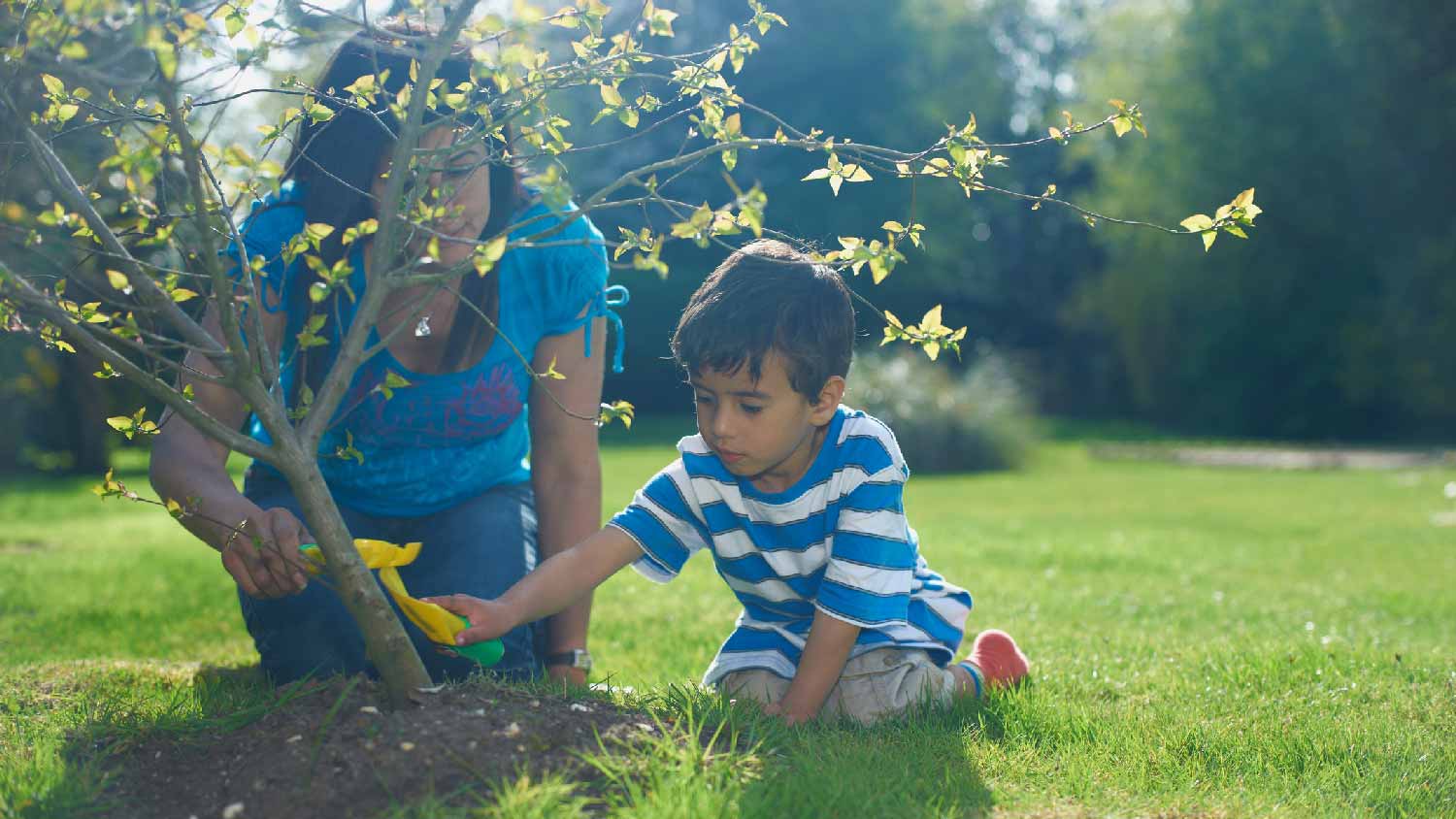
You can hire a stump removal service near you to remove the stump so you can plant a new shrub or tree nearby. In some cases, you can replant in the same spot, but you still need to wait for deep roots to decompose before you do. Here is how to plant trees after stump removal:
Before you start digging, it’s best to consult an arborist near you to determine if you should replant in the same location and what species of tree you should plant.
Consider waiting one to two years to replant in the same spot. Even if you plant a tree nearby, roots from the tree that was removed can still be intact further underground.
If you want to replant faster, plant at least six to eight feet away from the previous spot.
Dig a hole that’s approximately three times wider than the pot it is in. The top of the root ball should be level with the topsoil.
Break up the soil around the hole’s edges. Otherwise, it may be too compacted and will make it difficult for the tree to grow.
Remove the tree from the pot and the fabric wrapping if it has it. Depending on the tree, you may have to loosen the roots if they are bound together in the pot.
Saturate the root ball with water before you plant. Refill the hole with soil. You may need to add more topsoil as it settles.
Water the tree thoroughly after planting to ensure it stays hydrated. Most newly planted trees need water daily for 1 to 2 weeks. Make sure to water according to the specific needs of the species of tree you plant.
4. Use Your Leftover Stump Grindings
We don’t recommend leaving leftover stump grindings in the ground because they could cause nitrogen issues in the soil and inhibit the growth of grass or other plants. Instead, here’s how to use your leftover stump grindings:
Put a layer in the bottom of the stump hole: A single layer of grindings isn’t harmful to surrounding plants as long as you cover it with a hefty layer of soil on top. That saves on soil use when you’re leveling out the hole.
Using grindings as mulch: Grindings already have a lot in common with mulch, so they work well as a substitution for store-bought mulch. Put them on top of soil in areas where you don’t want weeds to grow, such as around bushes and trees, spread out in flower beds, or bordering pavers and fences.
5. Plant a Container Flower Bed
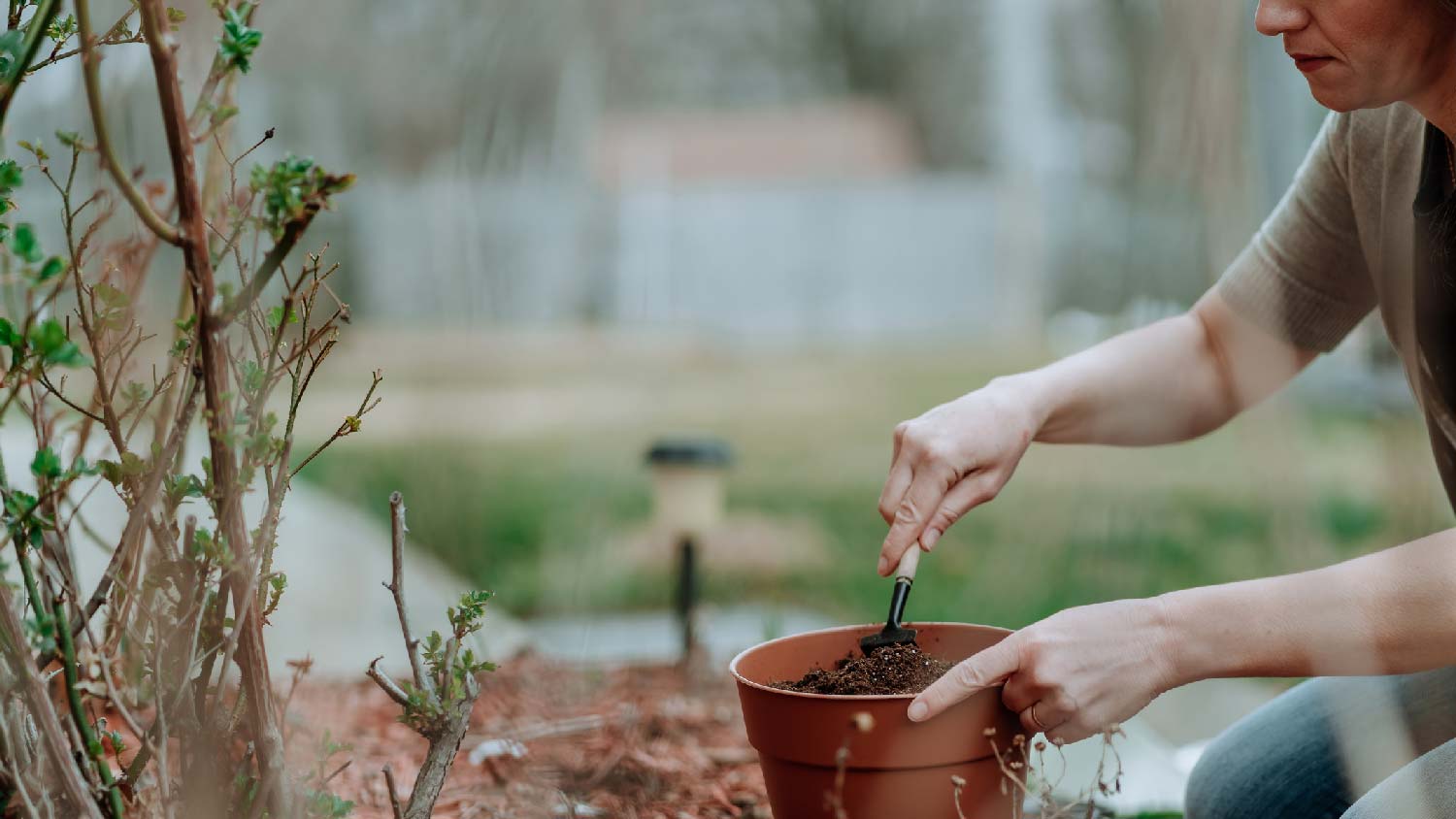
If you are wondering what to do after stump grinding that will make your yard beautiful and beneficial to birds and insects, then make a container garden with various types of flowers. Do not plant directly into the ground if any chemicals were used to remove the stump. Instead, utilize containers to ensure your flowers survive. Remember to choose flowers that will thrive in that area of the yard.
6. Create a Zen Garden
Do something unique and dedicate the space to a zen garden. Zen gardens typically contain rocks, sand, gravel, and wood, so they are known as dry gardens. Decorate with lanterns, statues, and a few green foliage plants such as moss, ferns, or bonsai trees.
7. Install a Water Fountain
If you have the stump removed, you can install a whimsical water fountain once the fill dirt settles. There are quite a few different types to choose from, and the cost of an outdoor water fountain ranges anywhere from $150 to $11,000.
Frequently Asked Questions
Stump grindings are usually safe to use in soil, but in some cases, it’s not recommended. Wood chips in particular can bind nitrogen in the soil, which will make it difficult for grass to grow. That’s why it’s important to remove most wood chips and use healthy garden soil if you want to cover the stump spot with grass. Large wood chips may attract beetles and could encourage the growth of fungi when they decay, so you may want to remove them when using the grindings.
For a large tree, roots can take 5 to 10 years to completely decay after a stump dies. But that’s rarely a concern for above-ground plants and growth. You can choose to grind up a stump immediately after felling a tree (although it will be tougher wood), or you can wait several months up to a year for the stump to decay. When finished, you can leave any leftover roots in the ground to decompose.
We recommend removing the stump, and grinding is a popular way to do it. You can also dig out small stumps or stumps that have fully decayed instead of grinding them. However, don’t try using acids or fire for killing a tree stump, which is a fire hazard and illegal in many areas.
Leaving the stump alone invites eventual problems, including attracting termites, mold, and fungi.
A stump grinder can cause damage if it’s used improperly. These are large, powerful saw tools that need careful handling even when not in use. When used improperly or when the sawblade misses the mark, it can easily damage your lawn, walkways, nearby flower borders and delicate borders. That’s why it’s important to use stump grinders carefully and to contact a professional if you don’t feel up to the task.

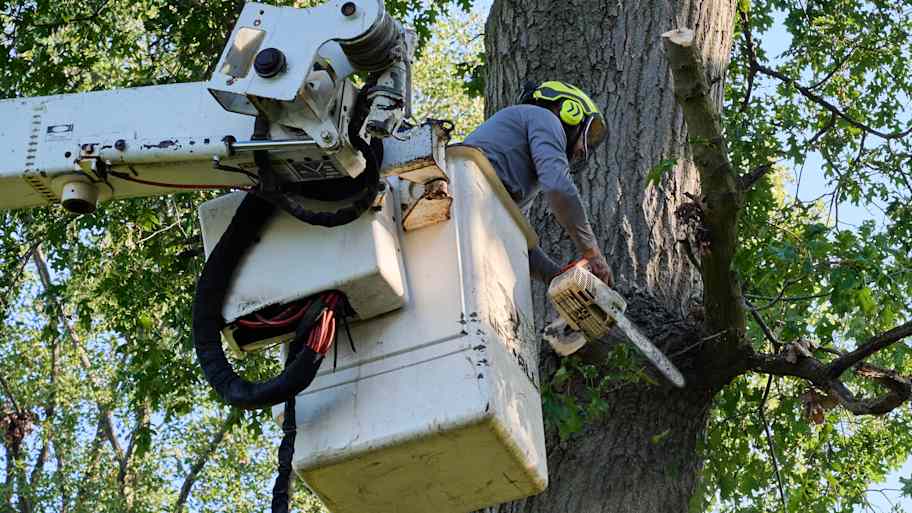
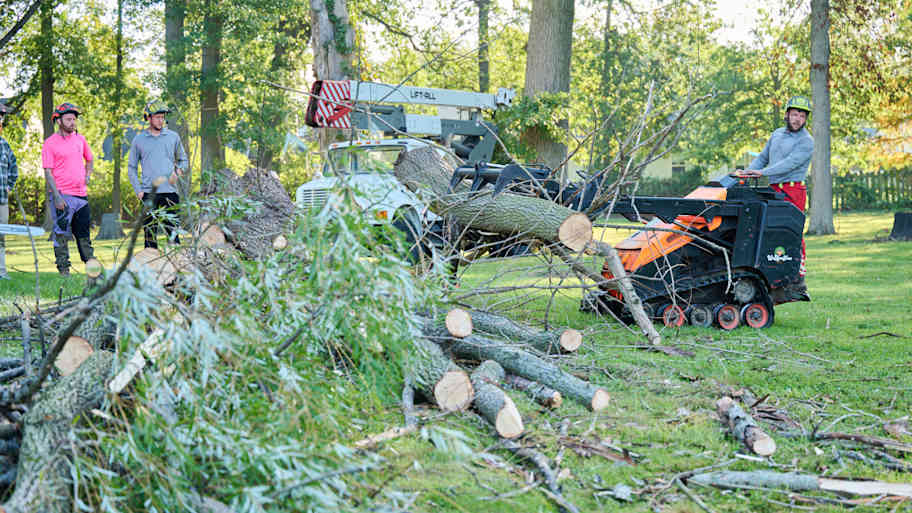
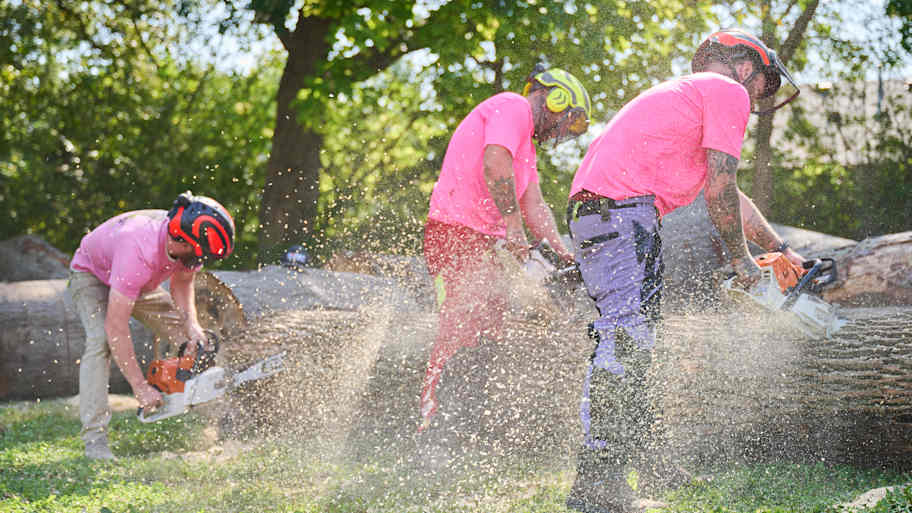

- Is Stump Grinding Necessary? Pros and Cons of Stump Grinding
- 7 Ways to Remove a Tree Stump
- What Is Stump Grinding? Here’s Everything You Need to Know
- 17 Creative Ideas for Tree Stumps Stuck in Your Yard
- Stump Grinding vs. Removal: Which Is Better?
- How to Kill a Tree Stump: 7 Effective Methods to Try
- How to Rot a Tree Stump Fast
- How to Stop a Tree Stump From Growing: 4 Different Methods
- How to Use a Stump Grinder
- How to Remove a Palm Tree Stump: A DIY Guide










